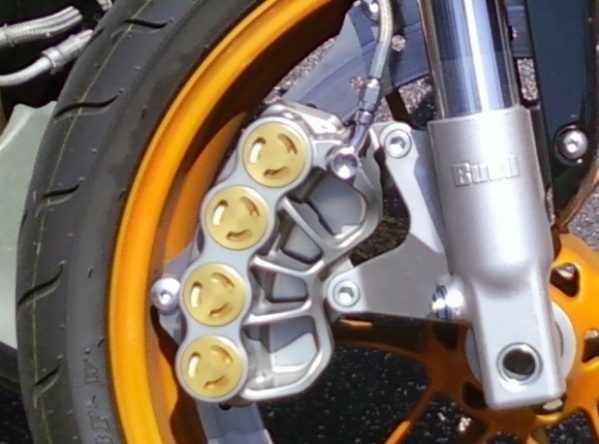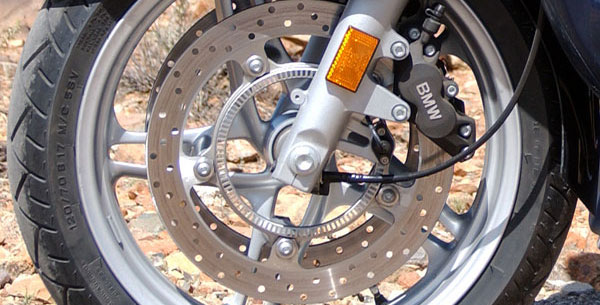| Author | Message | ||
M1combat |
Close... I think they'll be for the well to do faithful. I'd have one in a MOMENT if I could afford one right now. Still looking for an XBRR engine  . . I remember standing in the garage at Daytona with Brankin and Ramone looking at one sitting on the floor. I almost asked if I could have it  . . (Message edited by M1Combat on September 17, 2010) | ||
Delta_one |
for ratbuell \ youtube { kecdNnykdng } without the spaces, the letter code is everything after the = in the address bar on youtube. | ||
Crusty |
http://www.youtube.com/watch?v=NFY3c_JIx5A | ||
Spuds |
k....that Levellers tune kicks butt! | ||
Cochise |
I throw my hands up, not another test When EriK throws his hands up, what does he catch them with? | ||
86129squids |
"When EriK throws his hands up, what does he catch them with?" Chuck Norris. | ||
Thepod |
Just rode the BMW s1000RR. Fully loaded with ABS and traction control it lists for just under $17,000. It is very impressive. I'm just wondering how the new Erik Buell Racing 1190RS is going to stack up against that? Is there any hint it has ABS, traction control or any of the other electronic goodies? | ||
Hootowl |
That's an interesting question Adam. Are you at superbike school with Paul? | ||
Thepod |
Yes, or at least I was on Saturday and Sunday. It is the best upgrade you can buy for your bike. See you at the pirate party! | ||
Fast1075 |
It will be a Buell...raw and visceral with handling like a razor....skilled riders only need apply...no electronic whiz bangs or geegaws...you set it up for you and ride it as well as you can...traction control is in your right wrist...at least thats what I guess....it wouldn't be a buell otherwise... | ||
Malott442 |
Ummmmm......... I have to disagree. Though I agree it will likely be sans other goodies that have the luxury of $$ in development available. I hope to expect 2 wheels, a frame, a mortar pointed backwards, and a little person firing the mortar in rapid succession. I hope it has a seat. | ||
Hootowl |
If the competition is using ABS and traction control, won't Buell eventually need to adopt these in order to stay competitive? | ||
Jlnance |
Is there any hint it has ABS, traction control or any of the other electronic goodies? My understanding is there are are very few people working at Erik Buell Racing (like 5.) I don't think any of them are computer programmers. At which point the question becomes can you buy stuff like ABS and traction control off the shelf. If you can't, I wouldn't expect to see it on their first generation bike, custom development of stuff like that is expensive. Now there was a rumor (and even a picture) that the 2011 Uly was going to have ABS brakes. If that's the case, then someone has already developed them, and perhaps they are suitable and still available. | ||
Blake |
Mortars? Yikes!  | ||
Hootowl |
That there's a cheater bike! Talk about taking out the competition. | ||
Hughlysses |
Now there was a rumor (and even a picture) that the 2011 Uly was going to have ABS brakes. Our favorite amphibious poster clearly stated that about the Uly and ABS brakes, but I never saw a photo. Got a link? | ||
Blake |
I heard that the ABS was slated for future Buell bikes from a very reliable source. | ||
Mikef5000 |
Buell Employees at the 'One Last Ride' event confirmed ABS on 2011 Uly's. It is a fact, not a rumor. | ||
Crackhead |
humm.... the suppliers spent a whole lot of money designing the ABS system, i wounder if they would make a retro fit kit. | ||
Jlnance |
I never saw a photo. Got a link? It was somewhere on badweb. I don't have a link. I'm sure Froggy has the location memorized though.  | ||
Froggy |
I saw the picture I think he is talking about, but it does not appear to be ABS as far as I could tell. | ||
Froggy |
 | ||
Hughlysses |
OK, I remember that photo. I remember seeing a matching rear caliper photo too. ABS or not, that is one trick looking piece of hardware. ABS would have some sort of magnetic pickup to detect the wheel speed, correct? | ||
Firebolt020283 |
Those do look cool abs or not. | ||
Froggy |
If it was ABS it would need some kind of sensor to detect wheel speed. On BMW's they have that inner ring on the brake rotor with the little slots. The sensor reads the notches and can determine how fast the wheel is spinning, so it can figure out if it has locked up or not.  I don't see anything similar on the Buell, but there is more than one way to measure wheel speed. | ||
Hootowl |
adding teeth to the inside of the disk looks pretty easy. They could integrate the sensor into the caliper. The disk would then play two roles...very Buellish. | ||
Xl1200r |
Except that the disc is floating and the sensor would likely not work reliably if the things it was trying to sense kept moving back and forth. Every ABS system that I'm aware of, bikes or cars, looks like that found on the photo above. | ||
Hootowl |
It only floats side to side, so it wouldn't affect the reading. | ||
Xl1200r |
Yes, it floats to the side, towards and away from the sensor. I'm betting it would affect the reading. | ||
Hootowl |
It's most likely a hall effect sensor. The tooth is either there or it isn't. A tiny movement in or out won't make any difference. The sensor sends voltage spikes to the computer, it's only going to produce those spikes at the transition between the tooth being there and the tooth not being there. A minor variation in the distance from the sensor to the tooth won't change whether or when the spike occurs. |